
Bog Street’s contoured picks have grip control that keeps them between your fingers, not the floor
Bog Street’s ergonomically contoured picks are a palpable advancement in securing grip control that keeps their picks firmly between your fingers and not on the floor #Bogstreet #guitarpicks #plectrum
Read more »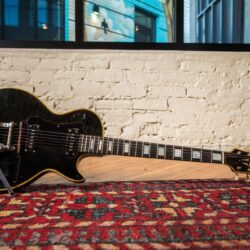
The Ultimate Les Paul: A Deep Dive into the Black Flat-Top Marvel Built for the Man Himself
This LP prototype, likely built by Gibson in 1958, is a fascinating piece of the iconic guitar style’s lineage.In the pantheon of electric guitar legends, few names resonate as powerfully as Les Paul. Not only did he lend his name to one of the most iconic guitars of all time, but he was also a relentless innovator—forever tweaking, refining, and reshaping his tools to chase the elusive perfection of tone. While many collectors and musicians have been captivated by his namesake production models, few have laid eyes on, let alone held, one of the true instruments crafted explicitly for Les Paul himself. This is the story of one such guitar: a custom-built black flat-top Gibson that was part of a rare twin set—crafted to meet the singular standards of a musical genius.Les Paul’s relationship with the electric guitar wasn’t one of casual use or simple preference. He was a pioneer, deeply immersed in the mechanics of tone and sustain. His work not only revolutionized how guitars were made, but also how they were recorded and performed with. This particular instrument, one of two black flat-tops likely built in 1958 alongside a pair of white counterparts, was a tool in his quest—a quest that combined science, artistry, and an insatiable curiosity.At first glance, the guitar seems understated. The black finish and flat-top construction suggest minimalism. But closer inspection reveals a level of design and detail that goes far beyond standard factory output. The body—a .25” maple cap atop a solid mahogany core—eschews the arched top and neck binding that many associate with high-end Gibsons of the era. It’s a design born from utility: flatter for increased contact, perhaps for Les’ recording techniques; unbound for ease of modification.But it’s inside the guitar where things get really interesting. Deep pickup cavities hint at experimentation beneath the surface. The control cavity was uniquely routed for access from both front and rear—an unusual feature likely intended to make electronics swaps and tests easier. The headstock, too, bears the mark of purposeful divergence: elongated with a long taper behind the nut, enhancing string length and tension, possibly for sustain or tonal balance.And then there are the modifications—refinements so specific they could only come from someone who viewed the guitar not as a finished product, but as a laboratory for sonic discovery. The pickups, Gibson’s low-impedance alnico “staple” style, were either wound by Les himself or by his son Gene. These pickups, with double-tall bobbins and a unique 4-screw mounting system, required a transformer to step up the impedance for direct input to an amp. AIR coils, reverse-wound for hum-cancelling, were mounted beneath the pickguard, beside each pickup. According to Les’ close friend and tech Tom Doyle, Les was using this technique in the late 1940s to get a quieter signal.“The spirit of the guitar—Les’ spirit—remained intact. It’s not a sterile museum piece, but a living, breathing testament to a life spent chasing sound.”In terms of playability, Les took matters into his own hands—literally. The neck profile was hand-shaped and refinished in black acrylic. The frets? Low, flat, and re-crowned using nothing more than flat files and emery boards—crude by modern standards, but a testament to Les’ commitment to hands-on craftsmanship. And the bridge? Carved by Les himself from wood, anchored with hefty .25″ studs to improve energy transfer and sustain.Another particularly unique feature is the missing 22nd fret. Removed deliberately, it allowed Les to move the neck pickup further up the body, balancing volume and tone as he climbed the fretboard—a mod unheard of at the time, and one that permanently altered the original pickguard. In true Les fashion, he crafted a new one, hand-shaped and signed on the back. That signature alone would make this guitar historic. The story it tells elevates it to something close to mythic.Beyond the customizations and features, the guitar bears the marks of its life. It’s a well-played instrument, worn from hours of rehearsal, performance, and experimentation. The original finish has held up remarkably well, with only minor touch-ups. The neck, however, wears its black paint like a badge of honor—proof of Les’ own hand at work. A headstock break in the mid-1960s forced its early retirement from Les’ regular use. Yet even in its dormancy, it remained significant.In 1974, the guitar changed hands through a trade, eventually resting in the possession of its most recent owner, Les’ friend and sound man Geoff Gray. It sat in storage for decades until its restoration began in 1998. The headstock was professionally repaired, and components like tuners, pots, and Bigsby were replaced with period-correct parts wherever possible. Importantly, the spirit of the guitar—Les’ spirit—remained intact. It’s not a sterile museum piece, but a living, breathing testament to a life spent chasing sound.This guitar, with its unique blend of factory precision and raw, personal modification, represents the closest one can get to stepping inside Les Paul’s creative process. It’s not just a player’s guitar. It’s not just a collector’s trophy. It’s a physical manifestation of innovation. A rare portal into the mind of a man who changed the course of music history.Offered most recently by Carter Vintage Guitars in Nashville for a cool $950,000, the guitar has since been sold. But its story continues to echo—a tone that, like Les himself, refuses to fade.SOURCES: Carter Vintage Guitar interview with Geoff Gray, personal letter from Tom Doyle, October 2024.
Read more »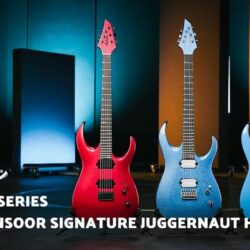
Jackson Expands Its Signature Juggernaut Range With Misha Mansoor
Jackson is once again partnering with Misha Mansoor to release three new signature guitars, The Pro Series Signature Misha Mansoor Juggernaut HT6 in Red Crystal and Blue Sparkle and The Pro Plus Series Signature Misha Mansoor Juggernaut ET6 in Riviera Blue. Developed in close partnership with Misha, these Juggernaut metal guitars are built to withstand the demands of Misha’s steadfast and fleet-fingered technique. Perfect for both classic and progressive metal players, these guitars deliver the modern sound that every shredder needs to ignite their tone.“This refresh came about because every few years we want to see what we can do…these guitars travel around the world and they need to be road ready,” said Misha Mansoor on his new signature guitars. “It’s a no nonsense guitar that looks good, sounds good, and plays good.”Djent forefather, Misha Mansoor, has gained widespread acclaim as the mastermind behind the axe-centric progressive metal band Periphery. Based in Washington D.C., Periphery is renowned for pushing the limits of progressive metal, using detuned, extended-range instruments to craft a sound that is both technically complex and unapologetically heavy. Misha Mansoor, guitarist and producer, co-founded the band in 2005. With the same precision and innovation that defines Misha’s playing, the Juggernaut signature gives players the power to transform their sound.The premium Juggernaut models feature a 25.5” scale length, poplar body and bolt-on caramelized maple neck with graphite reinforcement, wrap-around heel and oiled back finish for greater playing comfort. With a 20” flat radius ebony fingerboard that features rolled edges, fans can enjoy blazing fast leads. These models feature 24 jumbo stainless steel frets and offset dot inlays. Lastly, the Luminlayside-dots will guide the guitarist’s path even on the darkest of stages, while the heel-mount truss rod adjustment wheel allows for convenient neck relief tweaks. Misha worked closely, as he did with past models, to develop the exceptional uncovered direct-mount Jackson MM1 pickups. Unwilling to sacrifice tone, these pickups can be shaped with a five-way blade switch, single volume control, and a single tone control with push/pull feature that allows for players to engage or disengage tone options. Designed for articulate heavy picking, the humbuckers deliver a well-balanced sonic range with rich dynamics, intentionally left uncovered to enhance brightness and clarity.The Pro Plus Series Signature Misha Mansoor Juggernaut ET6 comes equipped with an EverTune F6 Model bridge, engineered to maintain perfect tuning and intonation across the entire neck, even with low tunings. Its counterpart, the Pro Series Signature Misha Mansoor Juggernaut HT6, features a string-through-body hardtail bridge that delivers enhanced sustain, rock-solid tuning stability, and simplified string changes. Both bridges are built to withstand intense playing conditions, providing the unwavering stability essential for Misha’s signature heavy metal style.“We’re beyond thrilled to be partnering with Misha Mansoor on his latest signature guitar collection. His innovation and vision perfectly align with our passion for pushing the boundaries of tone and design,” said Jon Romanowski, VP of Product of Jackson Guitars. “This collaboration reinforces Jackson’s commitment of providing for players who demand nothing but the best.”PRO SERIES SIGNATURE MISHA MANSOOR JUGGERNAUT HT6 ($999.99 USD, £949 GBP, €1,149 EUR, $1,899 AUD, ¥165,000 JPY) The Pro Juggernaut HT6 offers a Jackson HT6 string-through-body hardtail bridge, Jackson sealed die-cast locking tuners, Dunlop® dual-locking strap locks and a gig bag. It’s available in Red Crystal or Blue Sparkle with a matching reverse Jackson 3×3 AT-1 headstock.PRO PLUS SERIES SIGNATURE MISHA MANSOOR JUGGERNAUT ET6 ($1,399.99 USD, £1,399 GBP, €1,649 EUR, $2,599 AUD, ¥231,000 JPY) The Pro Plus Series Signature Misha Mansoor Juggernaut ET6 features an EverTune® F6 Model bridge that will keep your guitar perfectly in tune and intonate all the way up the neck to handle low tunings. This 6-string Juggernaut is wrapped in a statement- making Riviera Blue finish with a color matched reverse Jackson 3×3 AT-1 headstock and black hardware. It also features Dunlop® Dual-locking strap pins for maximum stability.
Read more »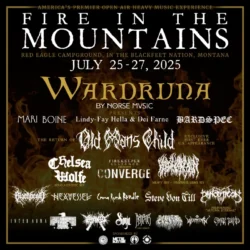
Fire in the Mountains 2025: Return, Renewal and Reverence
Three years after its last gathering beneath the jagged silhouettes of the Tetons, Fire in the Mountains returns—reignited and reimagined on the sovereign lands of the Blackfeet Nation in Montana, July 25–27.
The post Fire in the Mountains 2025: Return, Renewal and Reverence appeared first on Decibel Magazine.
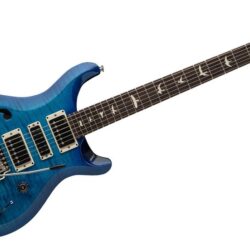
PRS S2 Special Semi-Hollow Review
If you’re not well-versed in the structure of PRS’s expansive lineup, the S2 instruments might seem to occupy a curious place in the line. They offer a more affordable path to U.S.-made PRS guitars. But to the uninitiated, the S2 Series can seem nearly as fancy as the Core series in many respects, and the guitars are generally distinguished by less ornate top woods than anything else. When it comes to playability and craft, you’re definitely not sacrificing much. So it goes with this new S2 Special Semi-Hollow.It’s been just shy of three decades since the first semi-hollow PRS came out, and they remain very appealing and intriguing instruments. The semi-hollow construction offers a truly different voice and feel, and the extra airspace is definitely heard and felt in this new S2 Special Semi-Hollow. It’s built with full-size 58/15 LT humbuckers in the neck and bridge positions , plus a Narrowfield pickup in the middle, which creates a bounty of voices via a 5-way blade switch and coil taps. With a PRS Patented Tremolo and Phase III locking tuners in the mix, the new S2 Special Semi-Hollow is pretty much ready for anything.Bird BrainThe S2 Special Semi-Hollow is capped by a top made of figured solid maple, with a body fashioned from chambered solid mahogany. It features an asymmetrical bevel around its edges rather than the gently arched top of violin-carve PRS models. That’s a cost-saving element, but it also makes its own stylistic statement and may well lend something unique to the guitar’s voice in certain situations. The chambering brings the otherwise beefy construction in at around 7.4 pounds (a spec that’s likely to vary somewhat from guitar to guitar).The glued-in mahogany neck is topped with a 22-fret rosewood fretboard with traditional PRS bird inlays. It’s carved to the company’s long-standing Pattern Regular profile (more PRS-speak for a rounded C carve that should be comfortable for most hands). Further cost savings are achieved via the scarfed headstock and heel joint. Specs-wise, the neck is built around PRS’s signature dimensions: a 25″ scale length, 10″ fingerboard radius, and a nut width of 1 21/32″, which famously represents a middle ground between Fender and Gibson specs.PRS applies a high-gloss nitro finish to the model—a brilliant lake blue on our test guitar that really makes the subtly flamed maple top pop. Black amber, dark cherry sunburst, faded gray black purple burst, faded gray black blue burst (say that 10 times fast), and fire red burst are also available, all with either matching or complementary headstocks. The nickel-plated hardware should hold no great surprises for PRS aficionados: the floating PRS Patented Tremolo is one of the smoother and more successful evolutions of the original Fender Stratocaster vibrato concept from 1954, and the Phase III locking tuners are a proven and time-tested component.Sound ViewThe S2 Special Semi-Hollow’s sonic capabilities are broad thanks to the complement of electronics, including the three Maryland-made pickups. The popular 58/15 LTs live unmistakably on the vintage PAF-style pickup spectrum. Both have dedicated mini-toggle coil-tap switches, and the front pickup is reversed from the standard orientation, putting the coil with the adjustable poles on the bridge side simply because, as PRS tells us, “We tested the pickups in both orientations and simply preferred it in this setting.”Between them is a Narrowfield humbucker that’s only used for the Stratocaster-like 2 and 4 positions on the 5-way blade switch, which means you still get the neck-and-bridge combination that many three-pickup guitars leave out. Between the 5-way and the dual mini-toggles, there are 12 pickup selections in total, all governed by master volume and tone controls.If the S2 is the “stripped-down” entry to PRS’s USA-made guitars, there’s no evidence of it in the fit and finish, which is what we’ve come to expect from PRS. Sure, it lacks the maple faux-binding around the body top and the bound fingerboard that bring the bling to fancier models, and the birds are acrylic rather than mother of pearl or abalone, but it’s all very well put together and is perfectly playable right out of the included gig bag.Triple ThreatHooked up to a Tone King Falcon 1×10, a Bassman head and 2×12 cab, and a Fractal FM9 modeler, the S2 Special Semi-Hollow proved flexible and adaptable to many amps and musical styles. Output from the 58/15 LT humbuckers generally walks the line between clarity and articulation in clean and edge-of-breakup tones and the warmth and thickness of vintage-wind humbuckers. With overdrive, they still bite and wail with the same sense of balance, bending to whatever gain and saturation you throw at them without losing their essence.It’s a truism of sorts that split humbuckers never quite sound like single-coils, but PRS has gone a long way toward rectifying that by adding a resistor between the deleted coil when you throw each pickup’s mini-toggle—leaving a little of the dumped coil-in signal to fatten the tone slightly. The result still might not sound exactly like a good Telecaster or Stratocaster pickup, but it’s an excellent representation of those tones when the songs demand it, and I’m doubtful anyone in the audience will protest the difference at your next gig. The real secret sauce, however, comes from the Narrowfield in the middle position. And although you never hear it on its own, it pairs well with either pickup in full or tapped mode to help nail those funky, scooped, wiry, in-between sounds. While the ability to flick among so many tones is a pleasure, it can feel fiddly jumping between favorite settings on the fly, but that seems like a small price to pay for this much utility.The VerdictTop marks are due to PRS for packing so much versatility into the S2 Special Semi-Hollow. Construction quality, fit, and finish are all exceptional as well, and if the contemporary looks and mixed-triple-pickups suit your tastes, the more accessible, if still significant, $2,599 price will represent real value to the right player.PRS S2 Special Semi-Hollow Electric Guitar – Lake Blue
S2 Special Semi-Hollow, Lake Blue
Read more »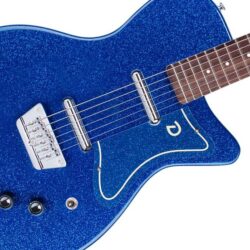
New Danelectro in Metal Flake and Glitter Finishes!
Grab a Dano and step into the spotlight! Adding an eye-catching flair to iconic models, Danelectro has introduced new Metal Flake and Glitter finishes to three of its best sellers.BIG SITAROriginally introduced in the 1960s, Danelectro’s Big Sitar appears on thousands of recordings. Its shape is instantly recognizable, as is its sonic imprint: this instrument jumps out in every musical setting! The new Metal Flake models continue the legacy, with 21 frets on a 24.75” scale neck, and three single coil lipstick pickups in the bridge, neck, and mini-harp positions. SINGLE CUT BARITONEGuitarists and bassists alike have fallen in love with this bari. Its 29.75″-scale neck, two lipstick pickups and B to B tuning hit a sweet spot, both in feel and tone! Now dressed in a great Blue Metal Flake finish, this instrument blends retro appeal – with its “Dolphin” headstock and deco stylings – and spotlight-worthy attitude.CLASSIC ’59Danelectro’s most famous model gets an ultra-classy treatment with three new finishes, all with black pickguard and black side tape. It’s a perfect complement to the ‘59’s timeless shorthorn shape, “bottle” headstock, 21-fret 25” scale neck and original rosewood saddle bridge. Of course, a pair of lipstick pickups deliver the inimitable Danelectro tone. For more information visit danelectro.com.
Read more »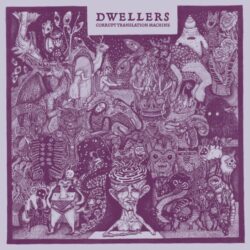
Video Premiere: Dwellers – “Headlines”
Members of Failure, Iota and Last converge in Salt Lake City quartet Dwellersand issue new animated video for progressive post-grunge track “Headlines.”
The post Video Premiere: Dwellers – “Headlines” appeared first on Decibel Magazine.
Amp Man’s Guide to Buying a Tube Amp
The longtime author of PG’s popular Ask Amp Man column—and one of the godfathers of the low-power-amp revolution with Budda and then EAST—returns to outline everything you need to know about tracking down the valve-propelled sound machine of your dreams.In the immortal words of the Byrds:“So you want to be a rock and roll star? / Then listen now to what I say.Just get an electric guitar / then take some time and learn how to play.”But you’re also going to need an amplifier! And if you’re following the Byrds’ protocol, you want a tube amp. These are the amps that voiced all the classic music that made history and still stands the test of time. Finding your ideal tube amp can be a never-ending search, but here are a few tips that may help you get started in your search for tube-amp nirvana. What do you expect from your amp? Do you want the amp to have a good clean sound as well as the gain you need for solos? If so, then you may want an amp with channel switching, enabling you to footswitch between beautiful clean rhythms and a powerful overdriven solo assault. Some control options to look for here: Does the amp have the ability to alter the tone of the clean and overdrive channels? Sometimes the two channels sound noticeably different, depending on the amp design. Some form of tone control—typically 2- or 3-band EQ—for each channel can help. Also, an added bonus might be a separate master volume control for the clean channel. This would allow you to crank up the gain to give you some nice crunch for your rhythm playing, while setting your overall crunch volume to match the overdrive channel.If you get most of your tones from pedals or maybe a multi-effects unit, then you probably won’t need channel switching and you may be best served with an amplifier that has a single channel and a simple control set. In this case, less is more, and the cleanest signal path will give your effects the opportunity to shine. A volume control and some form of tone shaping are all you’ll probably need. A good thing to remember is that many amps that have a lot of front-end gain don’t leave a lot of headroom for pedals. You might want to ask: “Does this amp take pedals well?”“A tube amp is like a car; occasionally, it will need service.”Know the difference between gain and volume. A gain control typically controls the amount of gain developed in the front end or preamp section of the amp. This is where most of the overdrive in the amp is developed. The volume control sets the overall loudness of the amp. A low-gain, high-volume setting equals a cleaner tone. A high-gain, low-volume setting equals a more overdriven tone. This is not the only way, however, to get an overdriven sound from an amplifier. Pushing the output tubes into distortion is also an option and has often been done both onstage as well as in the studio. So next….Consider the output power of the amplifier based on where you might be playing it. Most of us, nowadays, don’t need a 100-watt amp, or even a 50-watt amp, to play most venues. I currently play an EAST Duality 30—a 30-watt amp with a half-power mode, and 90 percent of my gigs are done at half power—with a six-piece band with two guitar players. It really doesn’t make sense to pay the increased cost of a 100- or 50-watt amp if you’re never going to need all that power. Tube amplifiers sound the best when the output tubes are being pushed a bit … or a lot! In fact, many classic solos were done in the studio with a low-powered amp pushed to its limits. Fender tweed Champs and tweed Deluxes seem to shine at this, although there are definitely a few Gibson amps from the ’50s and ’60s that will give them a run for the money! If you happen to encounter a ’50s or ’60s tweed Fender or a Gibson, I would suggest plugging in. Are you gonna get Metallica? No. Are you gonna get Neil Young? All day long! The Fenders of this era have been pretty costly for a while now, but the Gibsons seem to be just catching up. Would these be good as a first amp and give you everything you want? In most instances, no, but as you get some time under your belt as a guitar player, you may appreciate these for what they are. They actually do become another instrument under your control. “The option of different speaker cabinets with different speakers and configurations can go a long way to tailoring your sound to the gig and venue.”There is no “best” amp, just the best amp for you! So what output tubes should you consider? Let’s get familiar with the basic types of output tubes first; then we can explore how they’re different. In Photo 1, we see the four basic types of output tubes: 6L6, 6V6, EL34, and EL84. The first two were typically used in the American-produced amps of the ’60s and ’70s. The latter two were their counterparts (more or less) and used in European amps built during this period. After a while, they started to cross pollinate and, especially in the U.S., you could find amps being built with all of these types of tubes. Because of that, you need to take into consideration what type of material you play, as they each have their own tonal characteristics.If you’re into a classic rock or blues tone, that tone typically has more pronounced midrange content. This, in a broad-stroke kind of way, typically comes from an EL84- or an EL34-based amplifier. These output tubes typically have a more prominent and smooth midrange. If you’re more into hard rock/metal tones, a 6V6- or a 6L6-based amp may serve you better, as these output tubes typically have less midrange content with a more present top and bottom end, making it easier to establish the mid-scoop sound necessary for this music. What about hybrid amps? There are some amps out there that only have a tube or tubes in some part of their design. As far as I know, this started with the Music Man line of amplifiers in the ’60s, which had a solid-state front end and a tube output stage. Later, Fender and Marshall started offering amps with one preamp tube in the preamp stage with all other stages of the front end and output stage being solid-state. These amps certainly have less maintenance involved regarding tube replacement and can sound fine if they give you the sound you’re looking for, but personally I don’t categorize these as tube amps. “An open-back speaker cabinet or combo will tend to fill the area around it with a more ambient type of sound, almost 3-D.”And speaking of maintenance. A tube amp is like a car; occasionally, it will need service. Output tubes are the tubes that wear out sooner and will need to be replaced more often than preamp tubes. These are the tubes that run the hottest and provide the power to the speaker through an output transformer. Depending on the time of use as well as amount of volume, a typical rule of thumb for replacement of output tubes is six months to two years. That’s not to say that I haven’t seen tubes last 30 years, but if you’re gigging a good bit, you want your amp to be reliable. Another point to be aware of here is that most tube amps will require new output tubes to be biased when installed in the amp. There are exceptions, however. Many amps that use EL84-style output tubes are designed with what’s called cathode bias or self-biasing, where the circuit allows the tubes to find their own bias point. Other amps, such as most Mesa/Boogies, are designed with what’s known as a fixed-bias circuit, so no bias adjustment is possible. This is why they recommend purchasing only their branded output tubes, because they are selected to run within their chosen bias range. Personally, I have seen and serviced many amps with a variable bias control added so that any brand of tube can be properly biased. Either way, your amp may occasionally need a trip to your local experienced tube amp tech for a tube replacement, bias, and overall checkup. It’s worth it to keep it at the top of its game.Do you want a head or a combo? A combo is the easiest transportation option. If, say, you live in a city and you believe most of your gigs will require a grab-n-go option, a cab or Uber ride to the gig will be best served with your guitar in one hand and your amp in the other. If, on the other hand, you have the option of packing your own vehicle, you may want to consider a head and cabinet. Having this setup leaves you many options with regard to speakers and cabinets. While the amplifier is substantially responsible for your overall tone, the option of different speaker cabinets with different speakers and configurations can go a long way to tailoring your sound to the gig and venue. One thing to consider here is that because of all the internal vibration that occurs in a combo, it may require more frequent replacement of the tubes. Tubes are, after all, an electro-mechanical device, and vibration can affect their structural integrity. “If you get most of your tones from pedals or maybe a multi-effects unit, then you probably won’t need channel switching and you may be best served with an amplifier that has a single channel and a simple control set.”An open- or closed-back speaker cabinet? This choice can go a long way to getting the sound you’re looking for. An open-back speaker cabinet or combo will tend to fill the area around it with a more ambient type of sound, almost 3-D. This is especially great in a lower-powered amp, because it will help fill the stage without being overly loud. These typically don’t have much in the way of low-end sound. If you’re looking for that low-end thud, then you definitely need to focus on a closed-back cabinet. A closed-back cabinet is also much more directional, as all of the sound is coming directly from the front of the cabinet.To loop or not to loop? Although this pertains to solid-state amps as well, it’s worth addressing here as it applies to tube amps. As I mentioned above, if you get most of your sounds from pedals or multi-effects, then you may not need an effects loop because all your overdrive, fuzz, compression, and time-based units such as chorus, delay, flange, phase, etc., are all hitting your amp through the guitar input on the front panel. If you prefer to get both your clean and overdriven sounds primarily from the amp, then you’re more than likely using a channel-switching amp. In this case, you should definitely look for an effects loop option. The reason being that the sound of time-based units changes drastically when the overdrive channel of an amp is engaged. The extra gain almost always overexaggerates the level of these effects to the point where they become overwhelming. With these types of amps, any of your gain-based units (fuzz, overdrive, compression, boost) can be connected to the guitar input of the amp, but all of your time-based units should be connected through the effects loop. The level of the signal is typically much more consistent here, so the effects levels should not vary much. Hand-wired or circuit board? This is a question that you may not have even thought of, and that’s just fine. Some folks may prefer one over the other, so let’s take a minute to explore both. Of course, the first amplifiers ever built were hand-wired because circuit boards did not exist in the ’30s and ’40s. All the resistors and capacitors were soldered directly to a chassis-mounted component or to a chassis-mounted terminal strip. As time went on, eyelet boards and terminal boards were developed so that components could be mounted directly to these boards, and then wire leads would be used to connect these boards to all the chassis-mounted components such as the pots, tube sockets, jacks, etc. This is how all the early Fender and Gibson amps were built. Then came circuit boards, where not only the components were mounted but a good bit of the wiring itself was part of the board in the form of circuit traces, which are actually flat copper wire attached to the board itself. The earliest examples of circuit board amps I can remember were the early ’60s Ampeg amps. Nowadays, most amps are built using circuit-board technology because it can largely be automated, with everything from component placement through soldering being done by machines. So what’s the difference? Some players feel that a hand-wired amp just sounds better. Some feel they’re more reliable. Some feel that circuit board amps are more consistent from amp to amp because the build is exactly the same each time. All this can be true, but the bottom line is that it’s not all that important. The fact that is important remains if it’s the right amp for you. When you plug into the amp, do you hear what you want to hear? Does it make you want to play? Are you struggling to find a sound, or does it easily get you where you want to be? These are the most important things to ask yourself. Price point is probably next, but if it’s an amp that you really bond with, and it lets you get the sound you hear in your head, then it’s probably the amp for you!
Read more »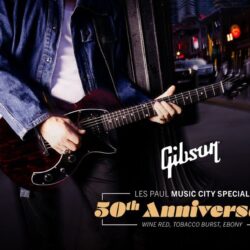
Introducing the Les Paul Music City Special
For 50 years, Gibson has been proud to call Nashville home, shaping sound, supporting the artists who make our community special, and crafting the guitars that have defined generations of music. Now, we’re honoring that legacy with something new. Introducing the Les Paul Music City Special – 50th Anniversary, a tribute to where we’ve been and a celebration of where the music will lead next.The Music City Special – 50th Anniversary is an updated, modern twist on two historical Gibson models, taking much of its inspiration from the 70s-era Marauder, with a touch of the Music City Junior in its DNA. Over the years, the Marauder has been used by artists from Adam Jones to Paul Stanley. This unique commemorative model pays tribute to the early days of Gibson’s Nashville production and celebrates Gibson’s 50 years of producing world-class guitars in Music City while delivering outstanding value to modern players.Key FeaturesLightweight, Contoured Poplar BodyMaple Neck with SlimTaper ProfileStriped Ebony Fretboard with 12″ Radius, Acrylic Dot Inlays, and 22 Medium Jumbo FretsGrover Mini Rotomatic Tuners70s Tribute Humbucker PickupsSoft Shell Case IncludedGibson Les Paul Music City Special 50th Anniversary Electric Guitar – Tobacco Burst
LP Music City Special 50th Anni, Tobacco Burst
Read more »Track Premiere: Crypt Monarch – ‘Terror From Above’
Get crushed by Costa Rican stoner-doom trio Crypt Monarch.
The post Track Premiere: Crypt Monarch – ‘Terror From Above’ appeared first on Decibel Magazine.
